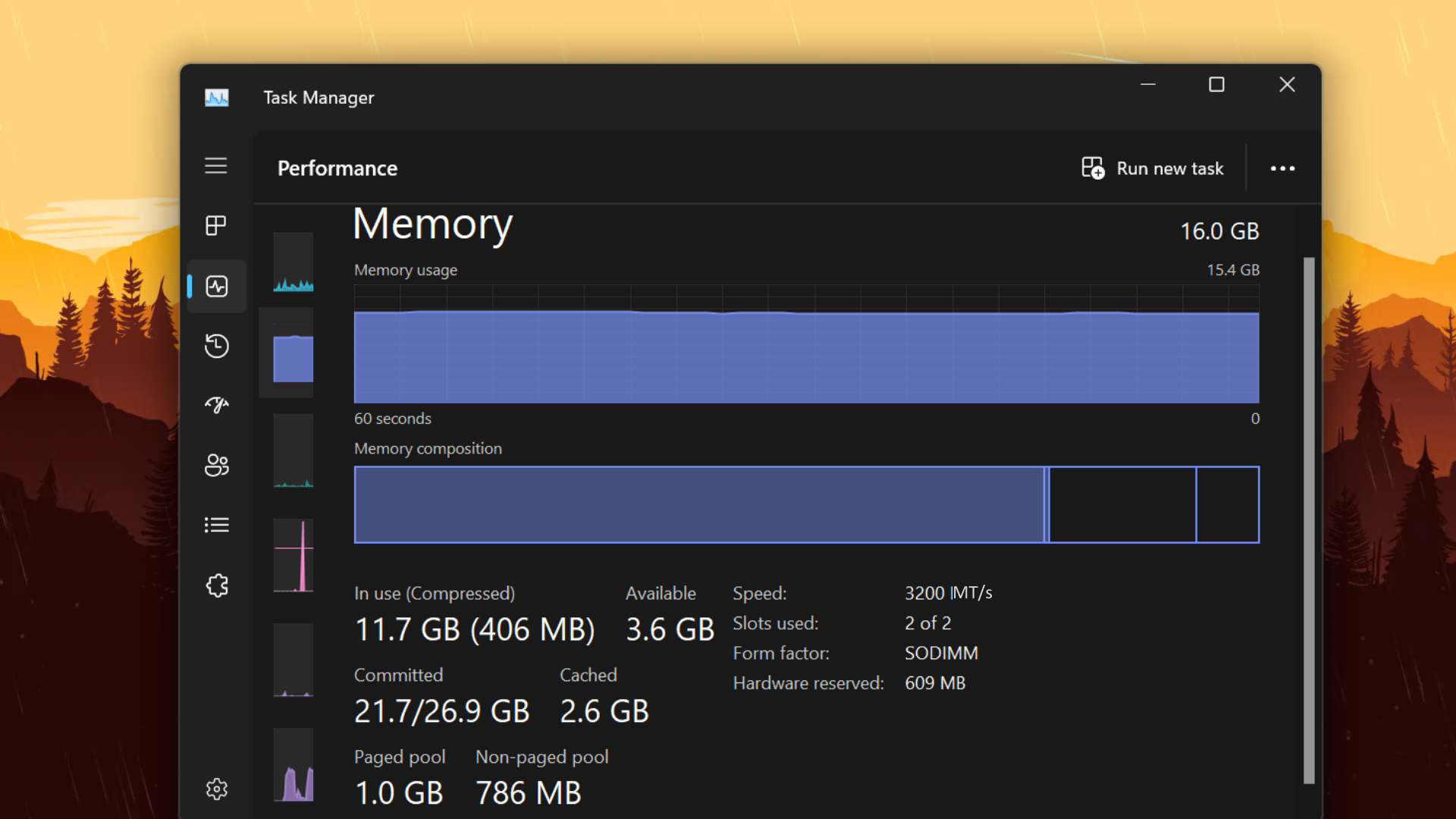
Microsoft is beginning to roll out a change to how Task Manager reports RAM speeds, updating its units from MHz to MT/s (mega transfers per second). This is in line with industry moves away from using MHz for measuring DDR speeds, as the actual clock frequencies are much lower than the effective speeds.
According to the Windows Insider blog, Microsoft is rolling out this change gradually to its beta users beginning with build 22635.3570. Windows Insiders who want the updated lingo sooner can jump on the most current update by selecting the "Get the latest updates as they are available" toggle in Settings > Windows Update. If you're champing at the bit for the change but don't want to take on the risks of Windows Beta releases, you'll need to wait a little longer for the change to propagate to non-Insider builds.
Microsoft's shift away from using MHz to describe RAM speeds follows an industry-wide shift away from what has become an inaccurate way of advertising memory speeds — and it hasn't been since the early 2000s. In the 1990s, all consumer RAM was SDRAM (Synchronous Dynamic Random Access Memory), so called because its operations synced with the clock speeds of the module. Back then, RAM would make one transfer per memory cycle, and as an example a speed of 100 MHz would equal 100 MT/s. But when DDR (Double Data Rate) SDRAM was introduced in the early 2000s, RAM modules could perform two transfers per cycle. Now a 100 MHz clock speed would actual equate to performance of 200 MT/s.
RAM manufacturers moved to using the larger numbers for branding but kept the MHz unit to avoid consumer confusion. This means that RAM advertised today as running at speeds of DDR5 6000 MHz actually clocks at 3000 MHz but performs 6000 MT/s. Even worse, GDDR5X and later memory solutions (including GDDR6) found on graphics cards can now use QDR, or Quad Data Rate. Using MHz or GHz thus becomes even more incorrect for describing graphics card's memory speeds.
Today, RAM manufacturers are moving to the simpler DDR5-6000 (no units) or the less common DDR5 6000 MT/s for advertising. It seems Microsoft will be on the earlier wave of adoption with its Task Manager update.
For the full list of updates to Task Manager's features outside of the unit change, check out the changelog from Windows Insider. Meanwhile, it seems the number of people who will see the update in action is dwindling, as Windows 11 market share continues to plummet — users are returning to 10 en masse, perhaps in response to the propagation of ads across the Windows 11 OS (which are thankfully easily removable).







